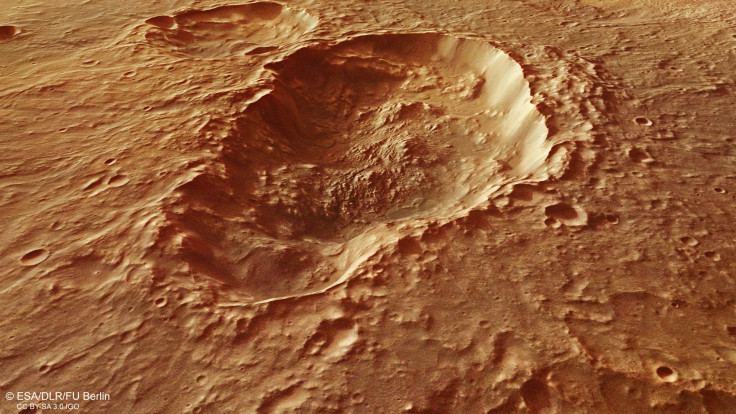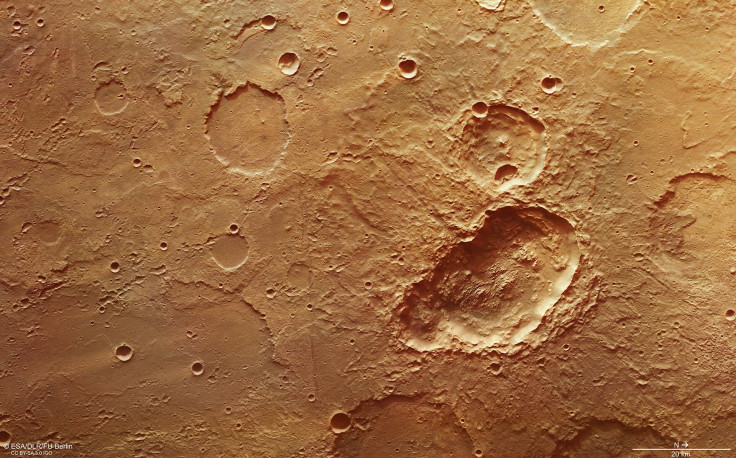Mars Crater Mystery: Did A Triple Asteroid Make This Weird Depression?

A crater on Mars looks weird because three objects crashed into that spot at the same time. But how it happened remains a mystery.
It might have been a meteoroid that split up into three pieces when it entered the pressure of Mars’ atmosphere, similar to how it might have broken up in Earth’s, according to the European Space Agency. Or the impact of a single object on the Martian surface could have done the splitting, sending pieces forward to elongate the crater. The ESA also lists a third possibility: a family of three asteroids that traveled through space together — known as a triple asteroid — before falling to Mars.

Astronomers see three impacts in the crater, which is 28 miles long and 15 miles wide, because there are three places in the elongated crater where rock has peaked. A peak forms in a larger impact crater because of the way rock moves after the crash. The crater is essentially collapsing back on itself, so the rock that was thrown to the edge rebounds back toward the center.
Read: How to See Mars without Leaving Earth
According to the ESA, this particular crater, located in the southern highlands of Mars in a region called Terra Sirenum, one of the oldest on the planet, was created by two larger pieces and a smaller one.
The debris that the collision threw out of the crater, known as ejecta, also points to a triple impact. It looks like waves that burst out of the hole and it has an uneven distribution, even overflowing into craters to its north and northeast.
Despite being asymmetrical, the debris is “continuous and at a uniform thickness around the crater,” the ESA says, which tells astronomers that it was all thrown out at the same time.
This is the second crater mystery scientists have solved in the last couple of weeks. Scientists recently determined that a popular D-shaped crater on the Moon called “Ina” looks young for its age — brighter than the other spots around it on the lunar surface — because the lava which a volcano erupted to create it was foamy. That foamy lava solidified into a porous kind of rock that hides dust that settles on the Moon and impacts from space rock that accumulate over time.
See also:
© Copyright IBTimes 2024. All rights reserved.




















